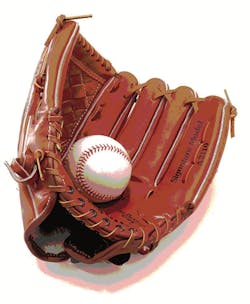Have you ever felt the only way to grow your business is to build more bays? Or have you ever walked into the shop in the afternoon and froze at the sight of empty bays when the morning seemed so busy?
One common, yet multi-layered question asked of me is, “How do I grow my business?” Fortunately, there is a blueprint. This blueprint will not mention marketing or advertising. While those concepts are important and do need your attention, this column will focus on the operational side of business growth. We will also use some baseball analogies to tie in with this year’s historic World Series.
Batting first is your leadoff hitter: car count, car count, car count! The leadoff hitter’s goal is to get on base; if he’s on base, he has a chance to score. It’s all about on-base, or in our case, in-bay percentage.
Tired of that plateau of 20 cars a day? Create a frenzy with free tire rotations and free alignment checks. Focus on building car count and not how much you sell on the ticket.
Also, never ever turn a car away because of an issue your shop is capable of solving. Figure it out later.
Haggle on due time, but never let them leave. Always end phone calls with, “Bring it down now, I’ll make room.” Hustle. Do not allow any sales staff or person answering the phone to say, “It will take longer than an hour.” Car count is the highest order of priority when growing.Second in your lineup is the contact hitter. At the very least this batter is expected to advance the runner, and at most get on base as well. Hitting into a double play eliminates opportunities.
In the tire service business, batting second requires the use of what I call (and borrowed from another industry) the “Yes, and...” technique.
Once your employees get used to there being more cars in the shop than ever before, deploy “Yes, and...,” which is tacking something relevant onto the conversation with the customer.
Yes: “I can get your oil change done in an hour.” And: “Is there any other maintenance you would like to get done today?”
Yes: “No problem, we will get these tires on for you right away.” And: “I will also check your alignment to make sure....”
The goal of the third batter is to knock in a run and keep the inning going. The cars are in the bays — now it’s time to set yourself up for additional service.
This is all about discipline: no poorly documented inspections, no “pencil whipping,” no forgetting to ask the customer. It’s OK if the customer says no to an inspection, it is not OK if your employees sabotage the process. Keep the inning alive.
The cleanup hitter is the last step (many businesses try for this too early and end up hurting their business). Batting cleanup is all about making sure as many people as possible cross the plate. A single clears two runs, a double the bases, etc.
This fourth step requires you to focus sales on the easy stuff. After identifying and solving any safety-related problems during the inspection, focus on maintenance. Up selling maintenance/brakes/flushes/balancing is easy and fast with low comebacks, and allows you to double your hours-times-bays versus car count.
If one customer says no, it’s OK, move on to the next. Trying to swing for the fences every time will end the inning pretty quickly most of the time.
Let’s look at it this from a numbers perspective. Small Business Tire and Auto in Lubbock, Texas, has four bays. It is open five days a week, eight hours a day. The owner’s average ticket is one billable hour per car, so the dealership’s first goal is to service 32 cars a day (8 hours times 4 bays).
Assuming he charges $100/hour for labor, he collects $16,000 a week in labor (8 hours x 4 bays x 5 days x $100/hours), plus parts and tires.
If we call the all-in amount $25,000 a week, that’s $100,000 a month, or $1.2 million in sales a year. Maintenance items like alignments and flushes that pay more than the time they take to perform could 1) double your average ticket billable hours and not increase the time the car spends in the bay, or 2) help you turn cars faster. You could get to $2.4 million in sales with the right crew and reputation.
If you have more than four bays, you should be able to hit $2.8 million or $3 million.
So unlike the Chicago Cubs, who won their first World Series since 1908, don’t wait 108 years to make it happen. Change starts today. ■
Dennis McCarron is executive director of Dealer Strategic Planning Inc., a company that manages multiple tire dealer 20 Groups in the U.S. (www.dsp-20group.com). To contact McCarron, email him at [email protected].
To see more of Dennis McCarron's columns, click:
Monetary Bonus Programs: Now Is the Time to Sit Down and Review Them
Real Sales Training and the Science -- Not Magic -- Behind It
5 Rules of Employee Reviews: Assessing Performance Is a Collaborative Effort
Assessing Performance: Employees Need to Know What is Expected of Them

